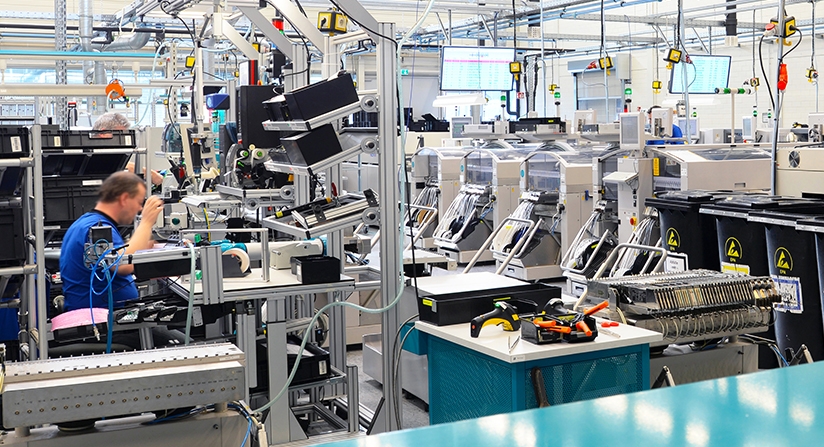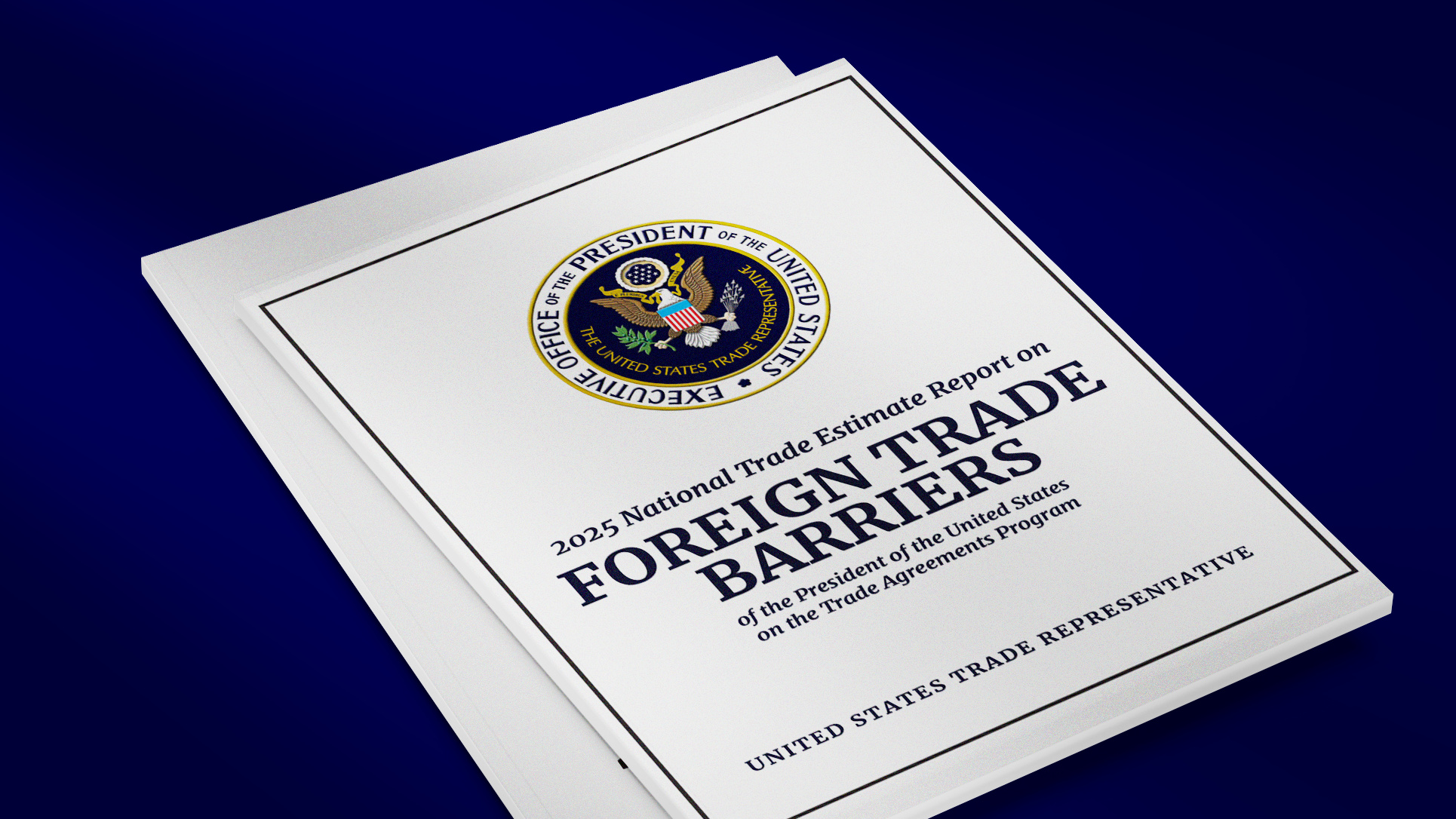Recently, we’ve seen a barrage of attacks on the pro-manufacturing policies enacted by Congress in the past two years. According to The Economist magazine, the world is supposedly in the grip of a manufacturing delusion. There is no delusion. On the contrary, it is a delusion to believe that a nation in the 21st century can achieve sustained economic growth and middle-class lifestyles for the majority without manufacturing. Only manufacturing provides the scalability and reach to make a large modern nation prosperous.
The critics overlook something that’s become obvious: their globalization experiment has failed. Across America, it has led to lost jobs for millions, income stagnation for millions more, and desolation for hundreds of cities and towns. It has also made America perilously dependent on other nations, especially China. This is a violation of our 200-year history, in which a very large degree of self-sufficiency made us the richest and most powerful nation on earth.
A strong manufacturing base is essential for a large nation such as the United States, for three reasons: national security, economic growth, and fair income distribution. In fact, manufacturing strength has become even more important in the 21st century because civilian and military uses for modern materials and products are more closely intertwined than ever. Two hundred years ago, when President Madison wanted to ensure that the U.S. possessed sufficient small arms to fight the British, he asked Congress to pass the Tariff of 1816. Doing so kept out British guns and Madison then gave contracts to Eliphalet Remington’s riflemaking workshop in upstate New York. Remington built the whole rifle himself, with the help of a few craftsmen.
Today’s military equipment require thousands of parts made by specialists in many fields. Fighter jets are built of strong but light steel and aluminum and use motors and actuators powered by the latest semiconductors and permanent magnets. To develop all those components, a large industrial base with cutting-edge research and development is needed. But no nation can design and build such complex products economically if the only market is the military. A large civilian industry must co-exist to share the costs and drive product development forward.
National Security
In times of war, a nation’s defense is only as good as its supply lines. Many wars have been decided by access to resources such as oil, or vital parts for weapons. The U.S. is now experiencing this challenge as Lockheed Martin struggles to obtain the parts for HIMARS rocket launchers used by the Ukrainian army. Other examples of dangerous U.S. dependence on foreign suppliers include China’s almost total dominance of the processing of rare earth minerals and the production of ingots used to produce solar panels. The U.S. is also highly dependent on both India and China for many generic pharmaceutical drugs, including antibiotics. In the event of a military confrontation, can we survive a dependence on China for China?
These are just some of the most-publicized examples. But the last 40 years of globalization—which led companies to outsource the production of many components—has left U.S. industry dangerously dependent on suppliers located too far away, and in the case of those in China, subject to a hostile government’s whims. Greg Hayes, CEO of Raytheon, a $70 billion conglomerate and a major defense contractor, recently told the Financial Times that his company has “several thousand suppliers in China.” It’s likely that neither Hayes nor his customers at the Defense Department even know precisely which military systems and weapons rely on parts only available from China. A single part may only cost a nickel but if it’s not available a billion-dollar airplane could be grounded.
For 250 Years, Manufacturing Has Been the Key to Economic Growth
Since the first Industrial Revolution dating from the 1760s, manufacturing has been the key to economic growth, and has generated the huge rise in incomes that all advanced nations have enjoyed. As I explained in a previous article, manufacturing has two unique features: scalability and reach. Scalability means that a growing manufacturing industry leads to rapidly rising output, which increases labor productivity (output per worker), enabling wages to rise.
The manufacturing sector also has reach, meaning it can provide jobs across a significant part of the population for millions of workers. In the 1950s and 1960s, often recalled now as a time of unrivaled economic opportunity for the 62% of U.S. adults without college degrees, manufacturing workers made up some 30% of the U.S. labor force. Today, that figure is down to an all-time low at 8.3%, as we explain here.
The earnings advantage of manufacturing jobs can be seen clearly in Table 1. Last year the average annual earnings of a U.S. private sector employee was $58,024. The average employee in aerospace manufacturing earned almost double that, nearly $109,000. A computer/electronics employee earned 44% more, or $83,773. The average of all manufacturing sectors listed in Table 1 is 39% higher than average American earnings.
For the last 30 years, the globalization process has been driving workers out of these manufacturing sectors and into employment for sectors such as food service, accommodation, and retail. The table shows that these sectors pay some 40%-60% less than average private sector earnings, due to lower hourly earnings and lower hours per week. Those three low-paid sectors employed more than 40 million U.S. workers last year.
An industrial strategy should aim at offering jobs that will move workers out of low-paying sectors and into higher paying work. This can raise average incomes and U.S. gross domestic product (GDP). It would also make income distribution fairer by opening up more middle-income jobs to those with lower education levels.
Computer systems design (including software and other Internet services) is a special case. It’s a high-paying sector, and last year included an impressive 2.5 million employees. But it lacks the reach to make a substantial impact on U.S. economic growth. Computer design positions require higher education, including mathematical skills. Only some 38% of U.S. adults have four-year college degrees. The latest federal education data on tests of 13-year-old students shows an appalling 7 point drop in reading levels and 14 point drop in math levels compared with a decade ago. A small nation like Estonia can prioritize digital skills because it is able to implement its educational priorities throughout the national school system, and export digital products sufficient to bend the curve on its economic growth. The U.S., a large nation with a decentralized, arguably dysfunctional education system, cannot hope to build economic growth on digital skills alone.
| Table 1: Average employee earnings, selected US industries | ||||
| Industry | NAICS code | Number employees 2022 (000) | Average annual earnings 2022 ($) | Annual earnings compared to total private sector |
| Total private sector | 130,448 | $ 58,024 | 100 | |
| Manufacturing sector | ||||
| Aerospace mfg | 3364 | 500.9 | $ 108,940 | 188 |
| Computer/electronics mfg | 334 | 1088 | $ 83,773 | 144 |
| Pharmaceutical mfg | 3254 | 350.5 | $ 76,878 | 132 |
| Chemical mfg | 325 | 905.5 | $ 74,939 | 129 |
| Primary metal mfg | 331 | 362.5 | $ 69,283 | 119 |
| Motor vehicle total | 3361,2,3 | 1013.8 | $ 68,502 | 118 |
| Food mfg | 311 | 1695.8 | $ 50,480 | 87 |
| Simple average, all mfg ex. Food | 4221 | 139 | ||
| Services sector | ||||
| Computer Systems Design | 5415 | 2456.8 | $ 110,723 | 191 |
| Finance | 52 | 6671 | $ 80,748 | 139 |
| Construction | 23 | 7748 | $ 69,911 | 120 |
| Health care | 621,2,3 | 16298.8 | $ 62,280 | 107 |
| Transport and Warehousing | 48,49 | 6659 | $ 55,347 | 95 |
| Retail | 44,45 | 15487 | $ 36,103 | 62 |
| Accommodation | 721 | 15835 | $ 36,060 | 62 |
| Food services and drinking places | 722 | 11761.9 | $ 24,387 | 42 |
| Simple average, all services ex. CSD | 80,461 | 90 | ||
| Source: BLS, CPA calculations | ||||
Globalization Meets Insulation
One of the drivers of globalization in the U.S. was the feeling in the 1970s that some American workers, especially unionized workers and especially those in the auto industry, were earning “too much.” Binyamin Appelbaum explores this history, identifying Jimmy Carter’s economic advisor Alfred Kahn as a leader in this trend (Appelbaum, 2019). Since 1980, globalization was pursued by both political parties in Washington, and put unionized workers in competition with global labor. Economists gladly provided a pseudo-intellectual justification, invoking David Ricardo’s famous Law of Comparative Advantage, to claim that globalization would benefit all Americans. They ignored the fact that those American workers put in direct competition with workers earning $2 an hour in poor countries could only lose from such competition. Their choice would be either to accept lower wages or to lose their jobs.
In his best-selling novel, The Bonfire of the Vanities, Tom Wolfe wrote that the only way affluent New Yorkers could survive in a city teeming with drugs and crime was to “insulate, insulate, insulate.” For a high-wage nation like the U.S. to survive and thrive in a world where multinationals can produce almost anything with labor earning 80% less than American wages, the U.S. must insulate, insulate, insulate. This is why eliminating a trade deficit is so important—and why the Trump administration’s tariffs were an essential first step towards insulation and rebuilding U.S. prosperity.
In Tom Wolfe’s New York, it was the rich New Yorkers who benefited from insulation. In a globalized world, rich Americans benefit from globalization, because the availability of cheap foreign labor benefits U.S. senior management and shareholders in public companies. It is the middle-income groups that have lost out through a combination of wage stagnation and rising costs for essentials such as healthcare and higher education. Almost all of the gains from the last 30 years of globalization have gone to the top 20% of the U.S. population
In its July 15th issue, The Economist Magazine attacked what it called the “manufacturing delusion and the industrial strategies enacted by the Trump and Biden administration.” Its arguments are misleading. It is true that pro-manufacturing strategies must be carefully targeted, particularly at the sectors that pay the highest wages to their workers and have the potential for above-average growth in the future.
The Economist argues that employment in manufacturing is shrinking in most major nations. True, but the value of manufacturing is not in its job numbers. The value is that it generates large and growing revenue, profit, investment, and wages. As long as this revenue is kept within a nation, that nation will experience growth. The investment raises the productivity of labor, leading to higher wages, and the spending of the wages and profits generates more income and jobs in other industries.
The Wall Street Journal published a similar critique of industrial policy on July 13th, claiming that “Bidenomics needs more economic theory and data.” This misguided story should be read as a critique of academic economics, not of the policies now being implemented by Joe Biden, nor of the pro-manufacturing tariffs implemented by Donald Trump. See related article, Industrial Policies Gain Support in the Academy.
Every major economic success story of the past half-century has relied on industrial strategy, i.e. government involvement in targeting specific industries. Singapore is the outstanding example of such a success. It now has higher GDP per person than the U.S., largely as a result of a manufacturing sector whose relative size is double that of the U.S.
In 1960, Singapore was a poor nation. Beginning in the 1970s, Singapore adopted a set of industrial policies which included: targeting selected high-value manufacturing industries, educating its population to a high standard, insisting on maintaining a large trade surplus. In his magnum opus on Singapore’s success, ‘From Third World to First,’ Singapore’s first president Lee Kuan Yew summed up the strategy in one sentence: “Any enterprise that promised growth and employment we had to nurture.”[1]
In 2017, Singapore’s GDP per person surpassed the United States. As of 2022, its GDP per person, at $67,360, was 7% above that of the United States.
Lee Kuan Yew explains in his book that his economic policies were highly influenced by what he learned on visits to Japan, Taiwan, and South Korea. Those countries were also pursuing industrial strategies focused on manufacturing and maintaining a trade surplus. From Japan he learned the value of focusing on education, especially in the sciences, and large tax incentives to encourage investment in high-tech industries. Singapore attracts targeted industries but leaves it to the private sector to manage them. On the other hand, most housing is publicly owned, to free the population from the worries of paying high rent. It is a pragmatic mixture of public and private policy, governed by a focus on results rather than political debate.
Industrial Strategy and the Future
In the great American century of economic growth (1870-1970), the U.S. did not need government involvement in industrial strategy, except in exceptional cases. The U.S. was effectively insulated from the rest of the world by high trans-oceanic shipping costs, tariffs imposed until 1945, and its world-leading industrial technology after World War II.
Times have changed. No matter how much insulation we put between ourselves and other nations, some global competition will remain a reality. The Financial Times recently reported that China’s auto industry now has the capacity to produce around 40 million electric vehicles a year, but only has domestic demand for some 20-25 million. Last year, the U.S. produced 13.7 million vehicles. Given’s China’s historic willingness to subsidize its own industries to achieve high export levels, it is conceivable that without some form of U.S. government-led insulation, China could put America’s entire auto industry out of work.
In providing the nation with an industrial strategy, the U.S. government must make bets on the future. Some critics claim this cannot be done. Yet the East Asian nations have done this successfully. Other nations, including Israel and Estonia, have also achieved this. Perhaps the most instructive example is China. Around a decade ago, China’s “Made in China 2025” plan identified a handful of key industries in which China wished to lead the world. These included electric vehicles, renewable energy equipment, robotics, and semiconductors. China is well on the way to success in most of these industries. Of course, China has advantages, including a Communist dictatorship that can move workers around at will, low-wage labor, world-leading transportation infrastructure, and a global policy of blatant intellectual property theft.
Nevertheless, the U.S. could execute successful industrial strategies that would boost prosperity to new heights. Biden’s Infrastructure act, the CHIPS act, and the Inflation Reduction Act are all steps in the right direction.
End-to-End Supply Chains
There are two major shortcomings in current U.S. industrial strategy. The first is unwillingness to consider entire supply chains. Successful industrial strategies start with the end-product and work backwards from there. China is the world leader in EVs today because it built an end-to-end strategy from the minerals in the ground and their processing to the component manufacturing through to the finished EVs, with a protected home market, to ensure Chinese consumers would buy Chinese EVs.
The U.S. political system prevents such holistic thinking. Robert Lighthizer, the designer of Donald Trump’s tariff strategy, put tariffs on intermediate goods but avoided tariffing final products out of fear that consumers might react negatively. Similarly, the Biden administration is supporting the semiconductor industry because it won a congressional majority with a combination of national security relevance, union appeal, technology industry desire for tax credits, and individual states’ desire for jobs. But the U.S. is not supporting the broader supply chain, especially the end-products like computers and smartphones where those chips will be used. This risks failure, because once the tax credits expire, chip companies are likely to prefer their Asian chip fabrication plants, where costs are lower and they are closer to their customers.
The U.S. could build an end-to-end technology supply strategy because it possesses a large enough home market to sustain a viable, profitable industry. Any price increases would be overwhelmed by the combination of increasing industry revenue and jobs in the U.S., and the constant downward pressure on prices that flows from multiple companies engaged in technological improvement and home market competition.
A successful industrial strategy is about picking winners in industries, not companies. All the investment decisions should be made by private sector companies and there will be winners and losers, as in any other industry. The difference is that the U.S. would choose the targeted industries instead of allowing Asian countries to choose the most valuable industries—and leaving us with the leftovers.
The second shortcoming is that an intelligent industrial strategy must avoid becoming manipulated by the very companies that are recipients of the benefits. Industrial strategy will be forever tarnished by memories of Solyndra, which took $900 million of government money and then went bust. At that crucial moment, when dumped Chinese solar panels were destroying the U.S. solar industry, the U.S. government should have chosen 10 solar panel companies, given them all support, and announced publicly that it would put any of them into bankruptcy if they failed to meet targets on growth and profitability.
Current U.S. industrial policies are highly dependent on very large companies, including for example Intel, Micron, General Motors. Some may leverage government support into the economic growth the country needs. But others may turn out to be dinosaurs. The government needs alternative right from the start. The challenge is that neither Congress nor the executive branch has enough business knowledge to manage such a policy. This will be the challenge for the U.S. in today’s competitive world.
Footnotes
[1] Lee Kuan Yew, From Third World to First, Harper Collins, 2011, pg. 200.
References
Binyamin Appelbaum, The Economists’ Hour, Little Brown and Co., 2019.
Lee Kuan Yew, From Third World to First, Harper Collins, 2011.












